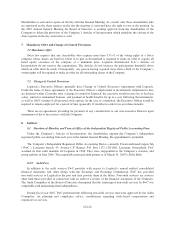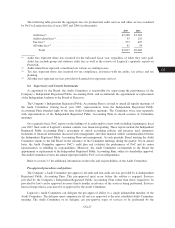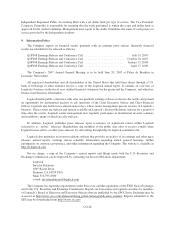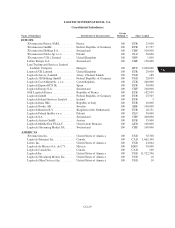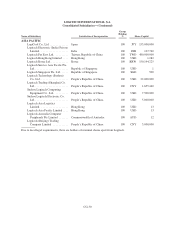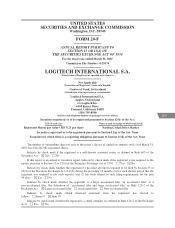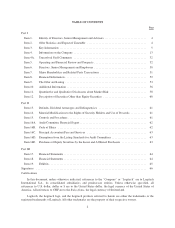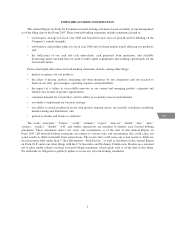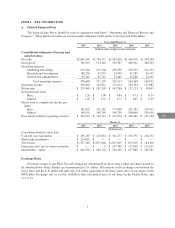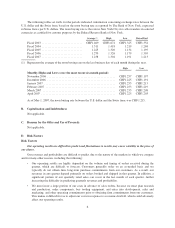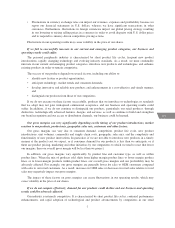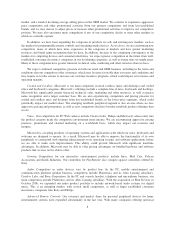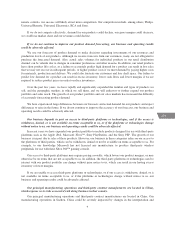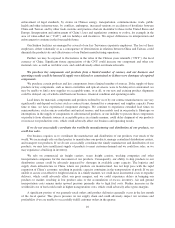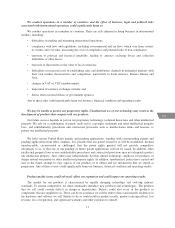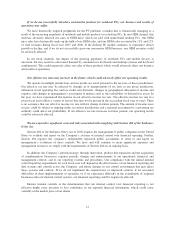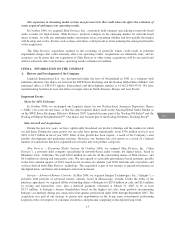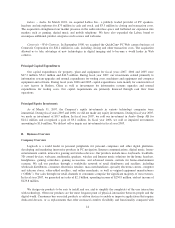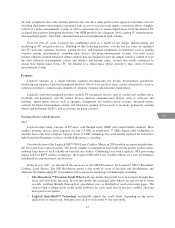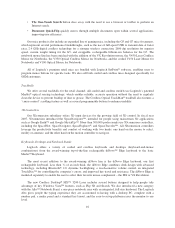Logitech 2007 Annual Report Download - page 58
Download and view the complete annual report
Please find page 58 of the 2007 Logitech annual report below. You can navigate through the pages in the report by either clicking on the pages listed below, or by using the keyword search tool below to find specific information within the annual report.
The following tables set forth, for the periods indicated, information concerning exchange rates between the
U.S. dollar and the Swiss franc based on the noon buying rate as reported by The Bank of New York, expressed
in Swiss francs per U.S. dollars. The noon buying rate is the rate in New York City for cable transfers in selected
currencies as certified for customs purposes by the Federal Reserve Bank of New York.
Average (1) High Low Period End
Fiscal 2003 ............................ CHF1.469 CHF1.674 CHF1.325 CHF1.354
Fiscal 2004 ............................ 1.311 1.418 1.219 1.268
Fiscal 2005 ............................ 1.225 1.320 1.134 1.195
Fiscal 2006 ............................ 1.270 1.326 1.179 1.303
Fiscal 2007 ............................ 1.238 1.304 1.191 1.213
(1) Represents the average of the noon buying rate on the last business day of each month during the year.
High Low
Monthly Highs and Lows (over the most recent six month period):
November 2006 ............................................... CHF1.257 CHF1.197
December 2006 ............................................... CHF1.225 CHF1.191
January 2007 ................................................. CHF1.253 CHF1.213
February 2007 ................................................ CHF1.253 CHF1.219
March 2007 .................................................. CHF1.233 CHF1.208
April 2007 ................................................... CHF1.225 CHF1.203
As of May 1, 2007, the noon buying rate between the U.S. dollar and the Swiss franc was CHF 1.215.
B. Capitalization and Indebtedness
Not applicable.
C. Reasons for the Offer and Use of Proceeds
Not applicable.
D. Risk Factors
Risk Factors
Our operating results are difficult to predict and fluctuations in results may cause volatility in the price of
our shares.
Our revenues and profitability are difficult to predict due to the nature of the markets in which we compete
and for many other reasons, including the following:
• Our operating results are highly dependent on the volume and timing of orders received during the
quarter, which are difficult to forecast. Customers generally order on an as-needed basis and we
typically do not obtain firm, long-term purchase commitments from our customers. As a result, our
revenues in any quarter depend primarily on orders booked and shipped in that quarter. In addition, a
significant portion of our quarterly retail sales can occur in the last month of each quarter, further
increasing the difficulty in predicting quarterly revenues and profitability.
• We must incur a large portion of our costs in advance of sales orders, because we must plan research
and production, order components, buy tooling equipment, and enter into development, sales and
marketing, and other operating commitments prior to obtaining firm commitments from our customers.
This makes it difficult for us to adjust our costs in response to a revenue shortfall, which could adversely
affect our operating results.
6


